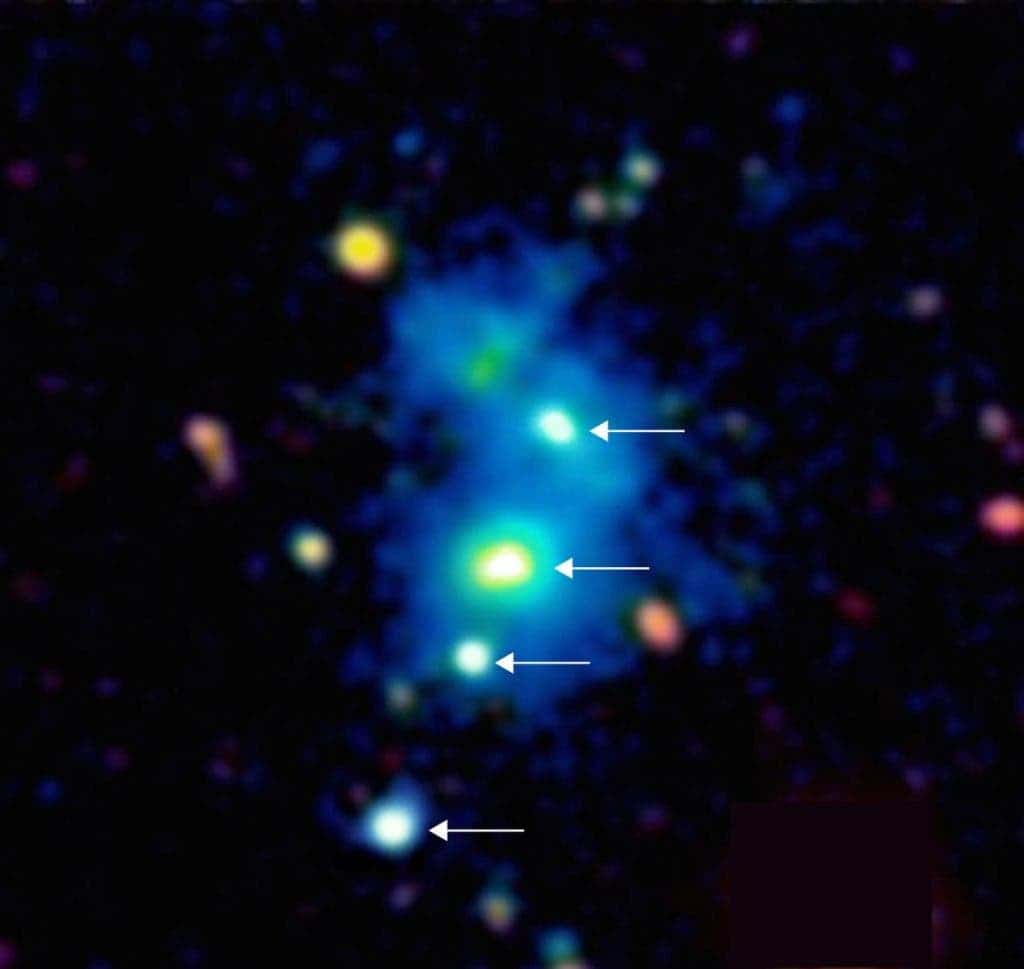A team of astronomers has discovered a unique system of quadruple quasars. The quartet, discovered at the very edge of the universe, is one of the most massive structures in the known universe.

“On average, quasars are about 100 million light-years apart,” says Joseph Hennawi lead author of a paper on the discovery published Thursday in Science. “The odds against finding four so close together are ten million to one.”
Quasars are the most energetic objects known to man, representing a class of objects called active galactic nuclei. Extremely luminous, the spectra of energy they emit is not seen in any other objects, and a single quasar can be more bright than the entire Milky Way. They’re basically the compact area around a supermassive black hole, swallowing gas and heating it up to immense temperatures.
Quasars were very controversial until the 1980s, but even though there is a general scientific consensus about them now, there are still many things we have yet to discover about them – and extreme occurrences like this one can help astronomers find out more about them. Quite possibly, that our theories are wrong.
“If you find something theory says is very unlikely, “you either have to conclude you got incredibly lucky, or that the theory is flawed,” says Hennawi, of the Max Planck Institute for Astronomy in Heidelberg, Germany.
Seeing two quasars together is very rare, three is even rarer, while four is basically unheard off – it’s a 1 in 10,000,000 chance. To make things even stranger, the four quasars are surrounded by a giant nebula of cool dense hydrogen gas, which also reflects light from the quasars. In addition, both the quartet and the surrounding nebula are found in one of the farthest areas in the known universe, which hosts a surprising amount of matter.
If you put all of these things together, you end up with an extremely unlikely picture.
“The authors found it by investigating the environment of just 29 bright quasars,” says Michele Trenti, a senior lecturer at the University of Melbourne’s School of Physics. “So at face value it seems like winning the lottery with a handful of tickets.”
So like Hennawi said, either “the stars aligned” for this lucky observation to be possible, or something is wrong with our theory of cosmology. If the theory would start to break down, then you’d expect it to break down at extreme objects, like black holes or quasars. Hopefully, future studies will shed light on this issue.
Journal Reference: Joseph F. Hennawi, J. Xavier Prochaska, Sebastiano Cantalupo, Fabrizio Arrigoni-Battaia. Quasar quartet embedded in giant nebula reveals rare massive structure in distant universe. DOI: 10.1126/science.aaa5397






